If you’re looking to add stunning blooms to your indoor garden, begonias offer an impressive range of options. These versatile plants feature everything from fuzzy Rex varieties with intricate leaf patterns to the dramatic Angel Wing begonias with their cascading flowers. You’ll find specimens that thrive in various light conditions, from bright indirect sunlight to partial shade, and many varieties flower year-round when properly maintained. Let’s explore the most enchanting indoor begonias that’ll transform your space.
Contents
- 1 1. Rex Begonia
- 2 2. Rieger Begonia
- 3 3. Angel Wing Begonia
- 4 4. Dragon Wing Begonia
- 5 5. Begonia Boliviensis
- 6 6. Begonia Fimbriata
- 7 7. Wax Begonia
- 8 8. Begonia Amphioxus
- 9 9. Polka Dot Begonia
- 10 10. Beefsteak Begonia
- 11 11. Begonia Bowerae
- 12 12. Begonia ‘Million Kisses’
- 13 13. Iron Cross Begonia
- 14 14. Begonia U093
- 15 15. Begonia Pink Minx
1. Rex Begonia
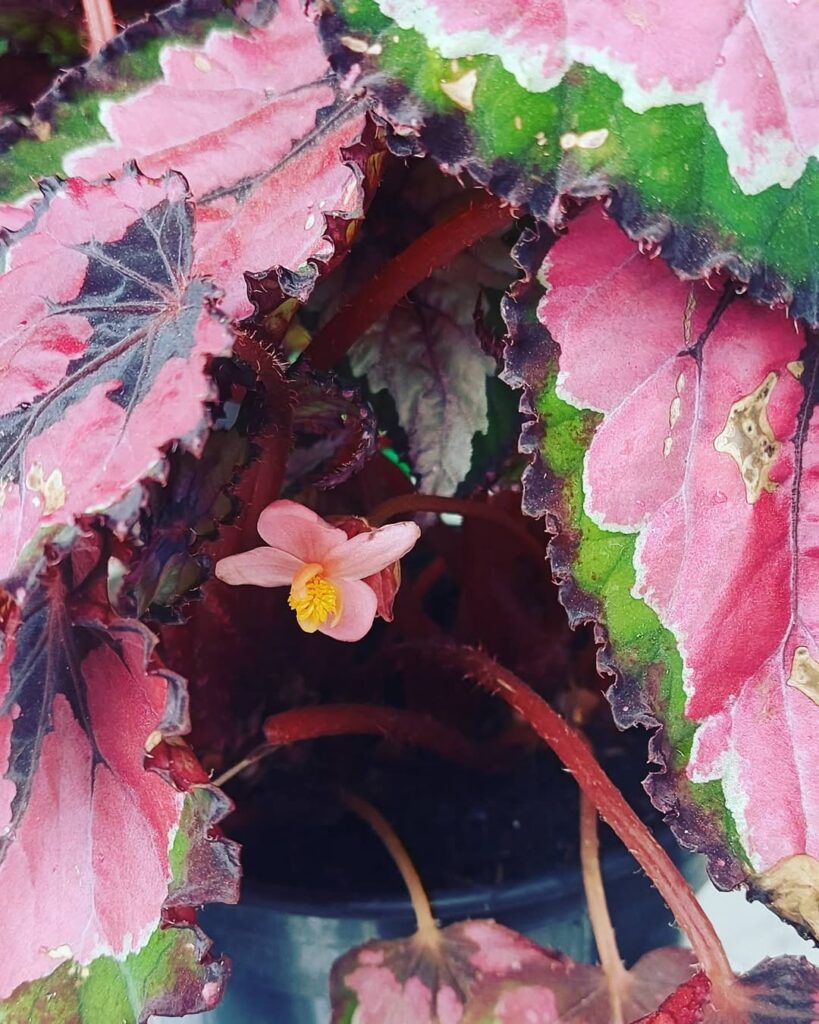
Begonia Rex is known for its stunning foliage rather than its blooms, but its rare pink flowers add a delicate charm to its bold leaves. The leaves come in vibrant colors like purple, silver, and deep green, making it a striking addition to indoor gardens. This begonia thrives in indirect light and high humidity, requiring consistent moisture to keep its leaves lush and healthy.
2. Rieger Begonia
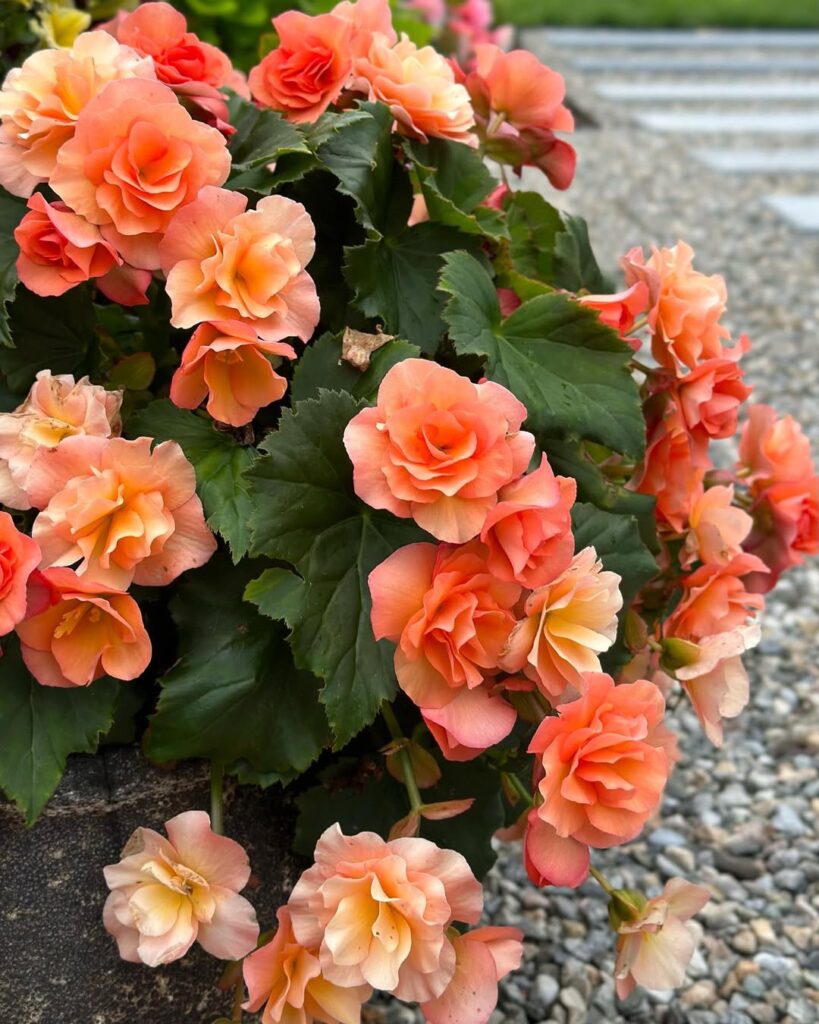
Rieger Begonias (Begonia x hiemalis) produce stunning clusters of rose-like double blooms in vibrant shades of pink, red, yellow, orange, and white. These flowering plants maintain their blooming cycle for several weeks, making them popular choices for indoor decoration and partially shaded garden spaces. Their compact growth habit, typically reaching 12-18 inches in height, combined with their prolific flowering nature, creates an impressive display of color against their dark green foliage.
- Light: Bright, indirect light; protect from harsh afternoon sun; morning sun is beneficial
- Water: Keep soil consistently moist but not waterlogged; water when top inch of soil feels dry
- Soil: Well-draining, rich potting mix with high organic content
- Temperature: 60-75°F (15-24°C); avoid cold drafts
- Humidity: Moderate to high humidity levels; mist regularly
- Fertilizer: Feed every 2-3 weeks during growing season with balanced, water-soluble fertilizer
- Pruning: Remove spent blooms to encourage continuous flowering
- Container: Use pots with adequate drainage holes
3. Angel Wing Begonia

Angel Wing Begonia’s pink blossoms are delicate, clustered flowers that dangle in graceful groups beneath their distinctive wing-shaped leaves. These blossoms range from soft pastel pink to deep rose hues and bloom profusely throughout the growing season when properly maintained. The flowers appear in pendulous clusters, creating a striking contrast against the dark green, silver-spotted foliage that gives this begonia variety its name.
4. Dragon Wing Begonia
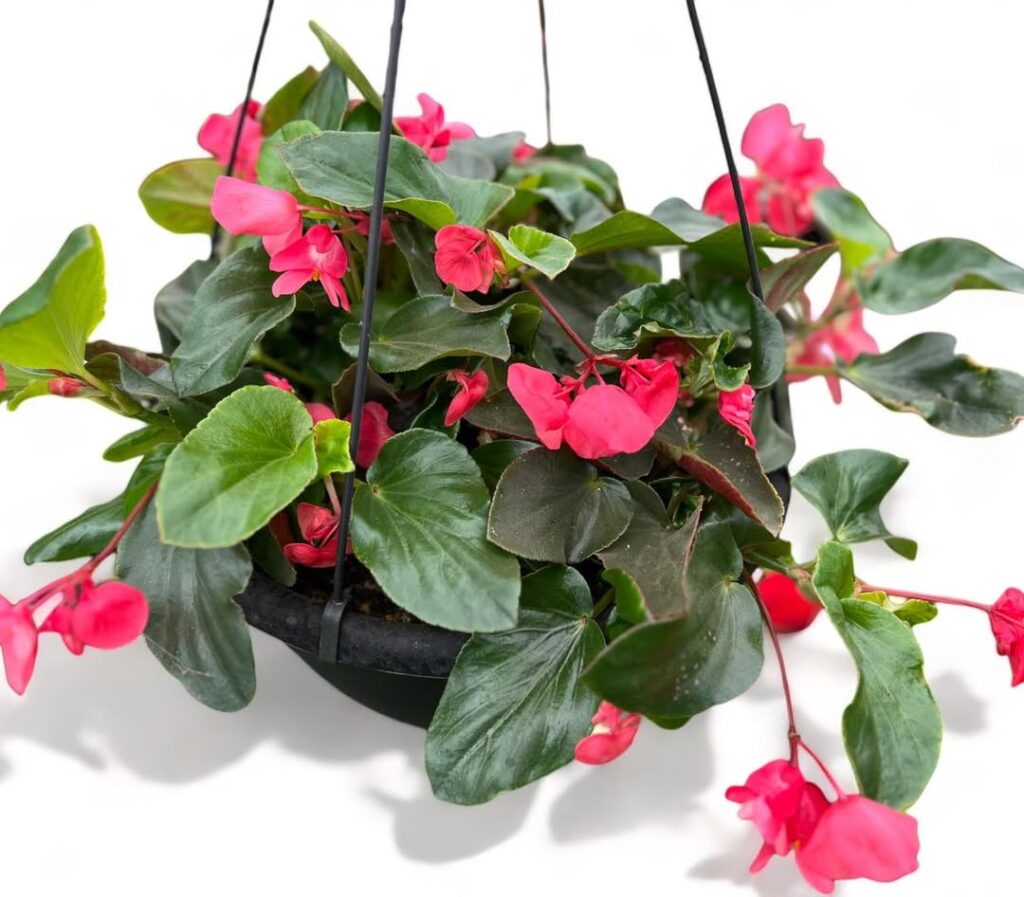
Dragon Wing Begonia’s red flowers are striking, angel wing-shaped blooms that appear in abundant clusters against glossy, wing-like foliage. These vibrant scarlet flowers hang gracefully on arching stems and bloom continuously from spring through fall, creating a dramatic cascading effect. The flowers measure about 1-2 inches across and provide a bold pop of color that makes this variety especially popular for containers and hanging baskets.
5. Begonia Boliviensis
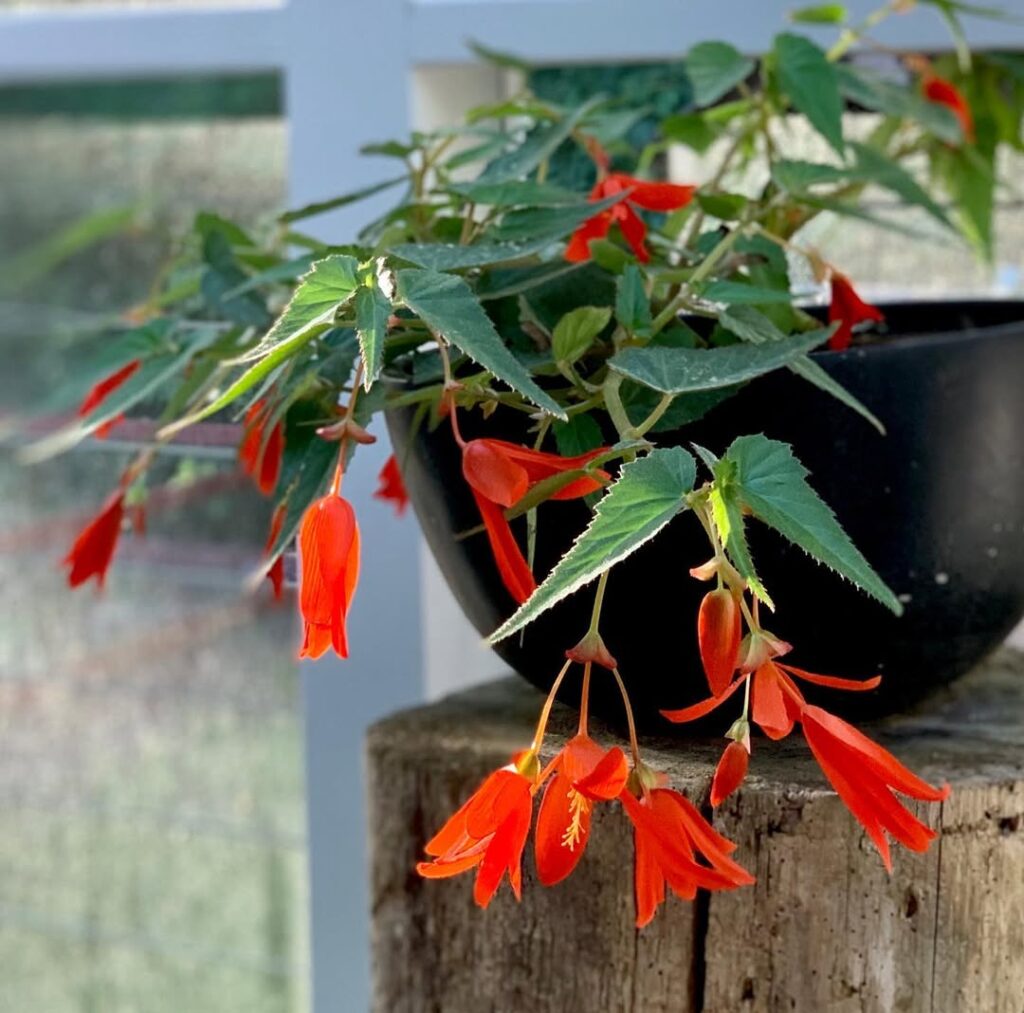
Begonia Boliviensis features long, trailing stems with bright red or orange flowers that bloom abundantly indoors. Its cascading form makes it ideal for hanging baskets, where its colorful flowers spill over beautifully.
6. Begonia Fimbriata

This variety stands out with its fringed flowers in red, pink, and white. Begonia Fimbriata has a bushy growth habit, making it a great indoor centerpiece.
7. Wax Begonia
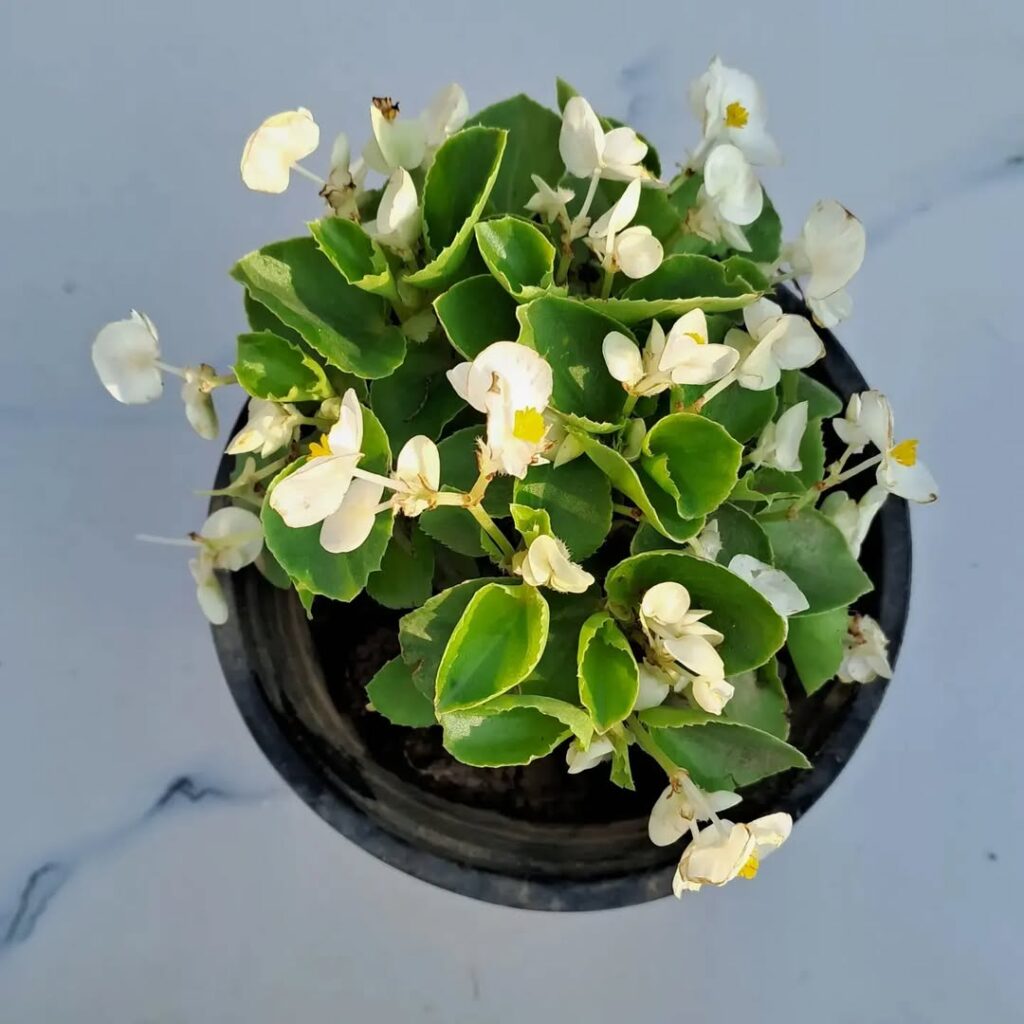
The wax begonia flowers are delicate and pristine blooms that stand out beautifully against the plant’s glossy, succulent-like foliage. These small, waxy flowers typically measure about an inch across and grow in clusters, featuring four petals arranged in a symmetrical pattern.
8. Begonia Amphioxus
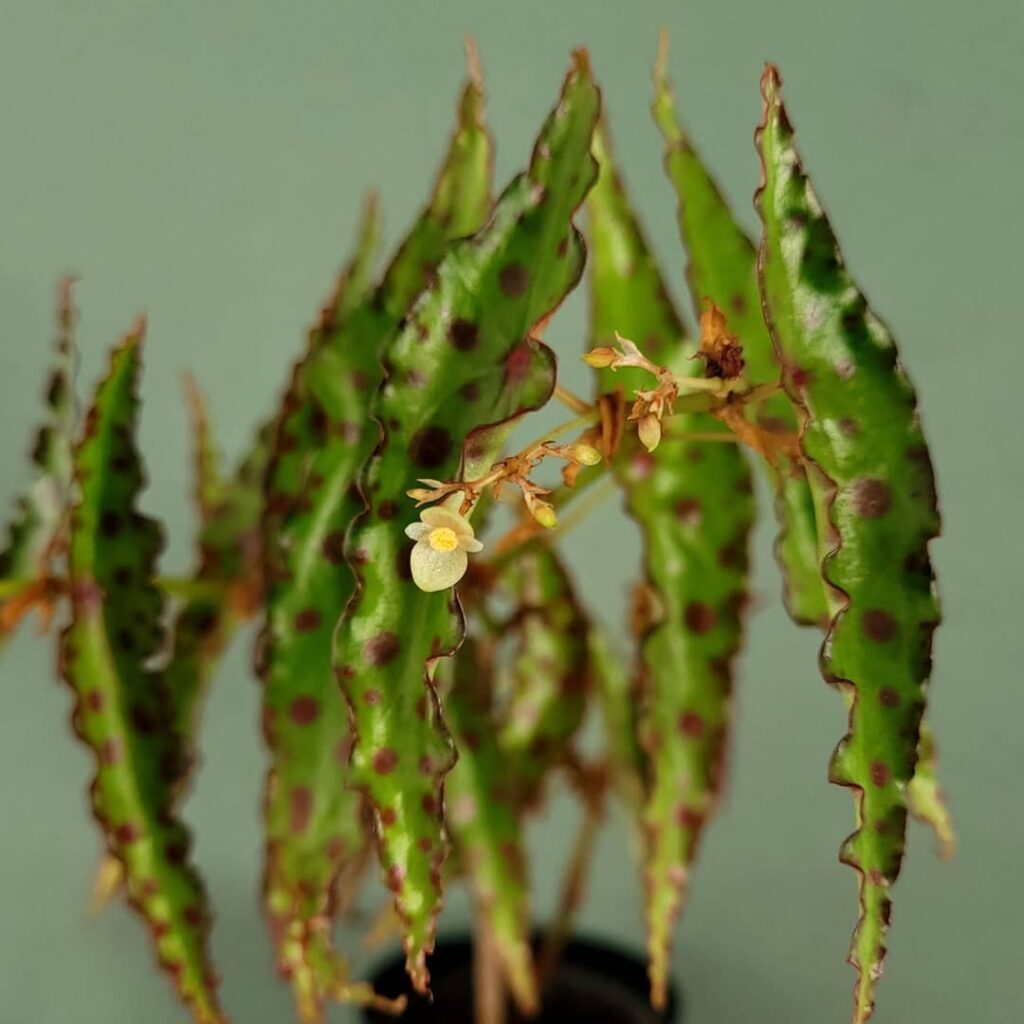
Begonia Amphioxus is a rare variety with lance-shaped leaves speckled with red dots. Its delicate flowers bloom subtly, but its bold foliage remains the main attraction. It thrives in warm, humid conditions and prefers a terrarium-like setup for best results.
9. Polka Dot Begonia
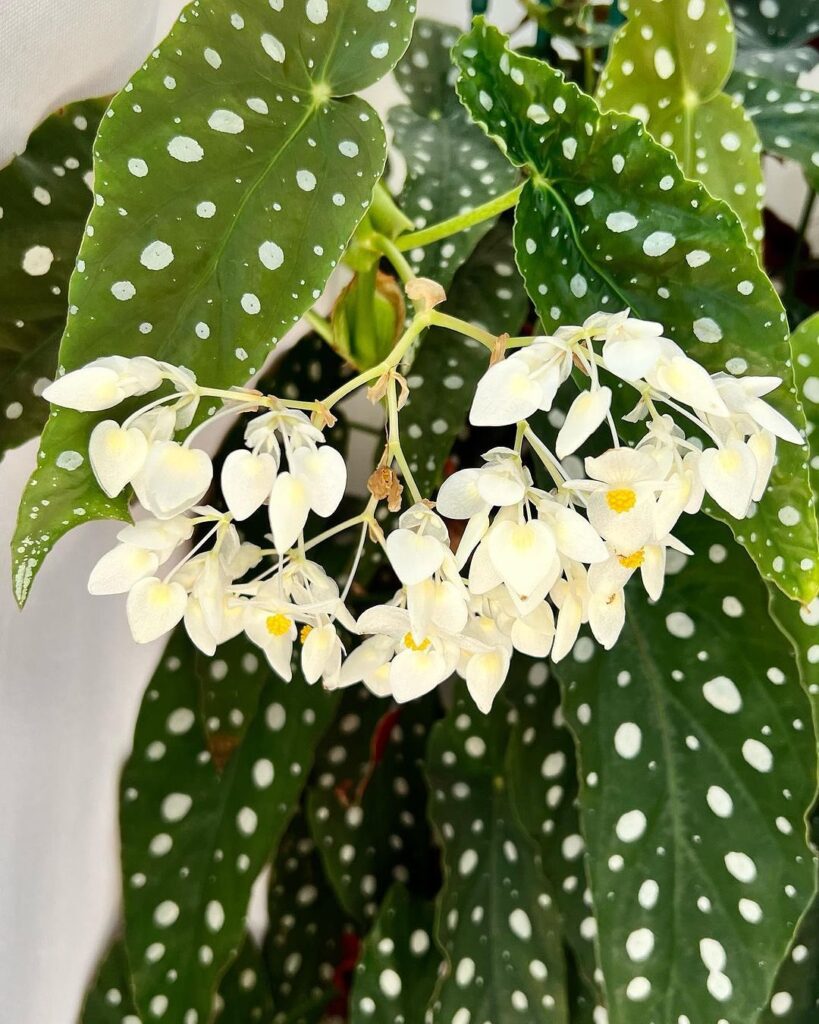
The Polka Dot Begonia (Begonia maculata) features distinctive olive-green leaves adorned with silvery-white spots on their upper surface and deep purple undersides. These spotted leaves grow in an asymmetrical angel-wing shape, creating a striking visual pattern that makes this variety a standout among houseplants. When healthy and mature, the plant produces delicate white flowers that bloom in clusters, providing an elegant contrast to its dramatic foliage.
10. Beefsteak Begonia
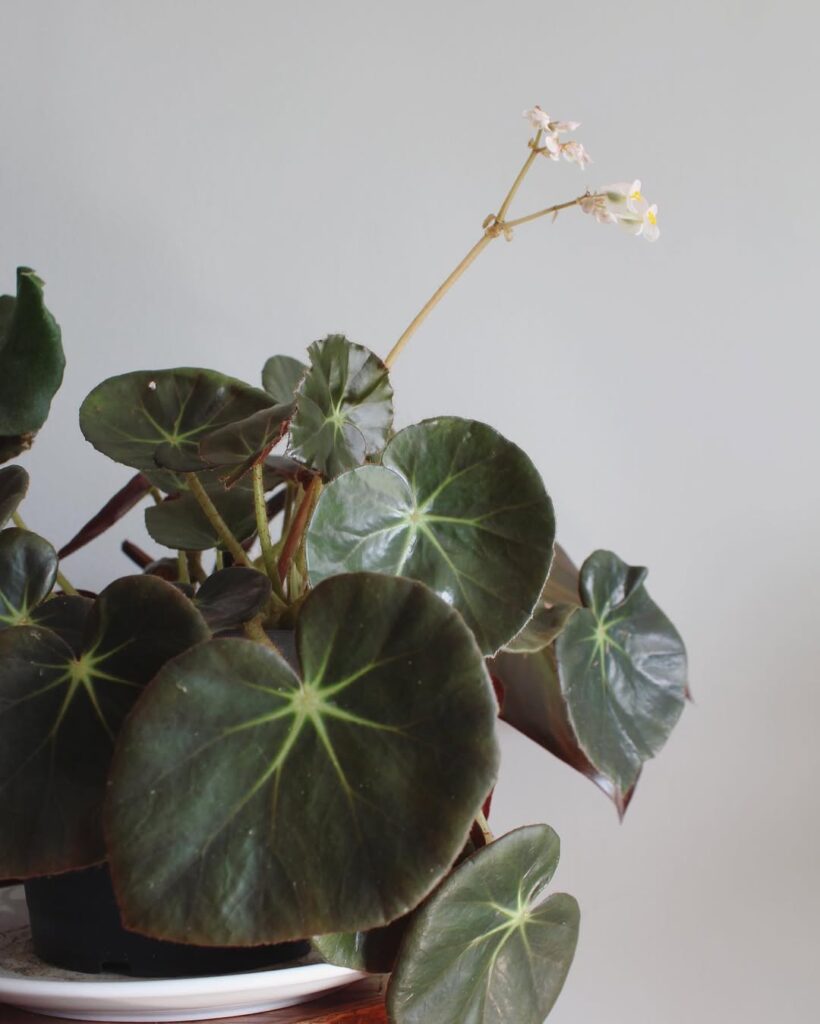
Beefsteak Begonia, also known as Begonia erythrophylla, is a hybrid variety with large, glossy leaves that have a deep green surface and reddish undersides. Its small white flowers with yellow centers bloom on thin stems, adding a delicate contrast to its bold foliage.
11. Begonia Bowerae

Also known as the Eyelash Begonia, Begonia Bowerae has small, fuzzy leaves with dark edges and tiny pink or white flowers. It stays compact, making it perfect for limited spaces. This begonia enjoys consistent moisture, and occasional leaf misting boosts health.
12. Begonia ‘Million Kisses’
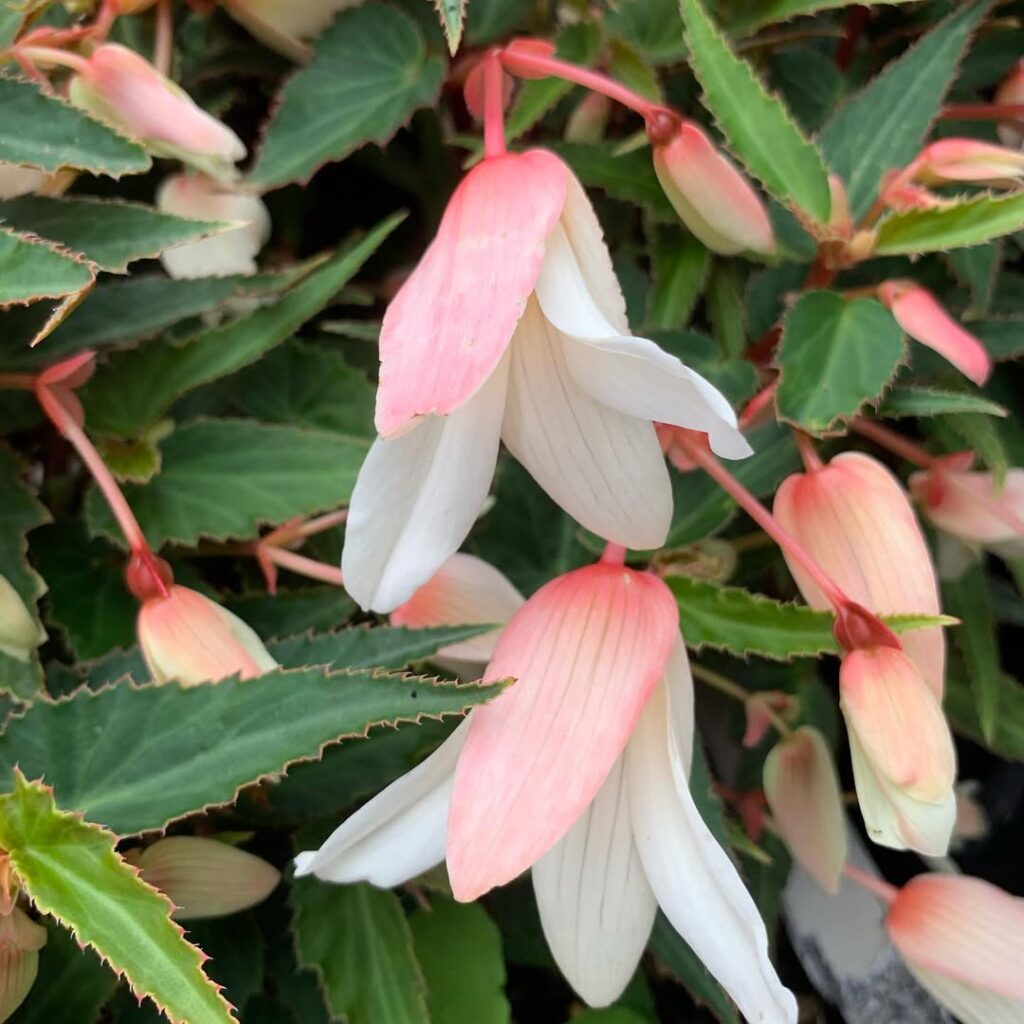
This hybrid variety boasts abundant small flowers in various colors. Its trailing growth habit makes it ideal for hanging baskets or high shelves. Regular watering and occasional feeding support its continuous blooming indoors.
13. Iron Cross Begonia
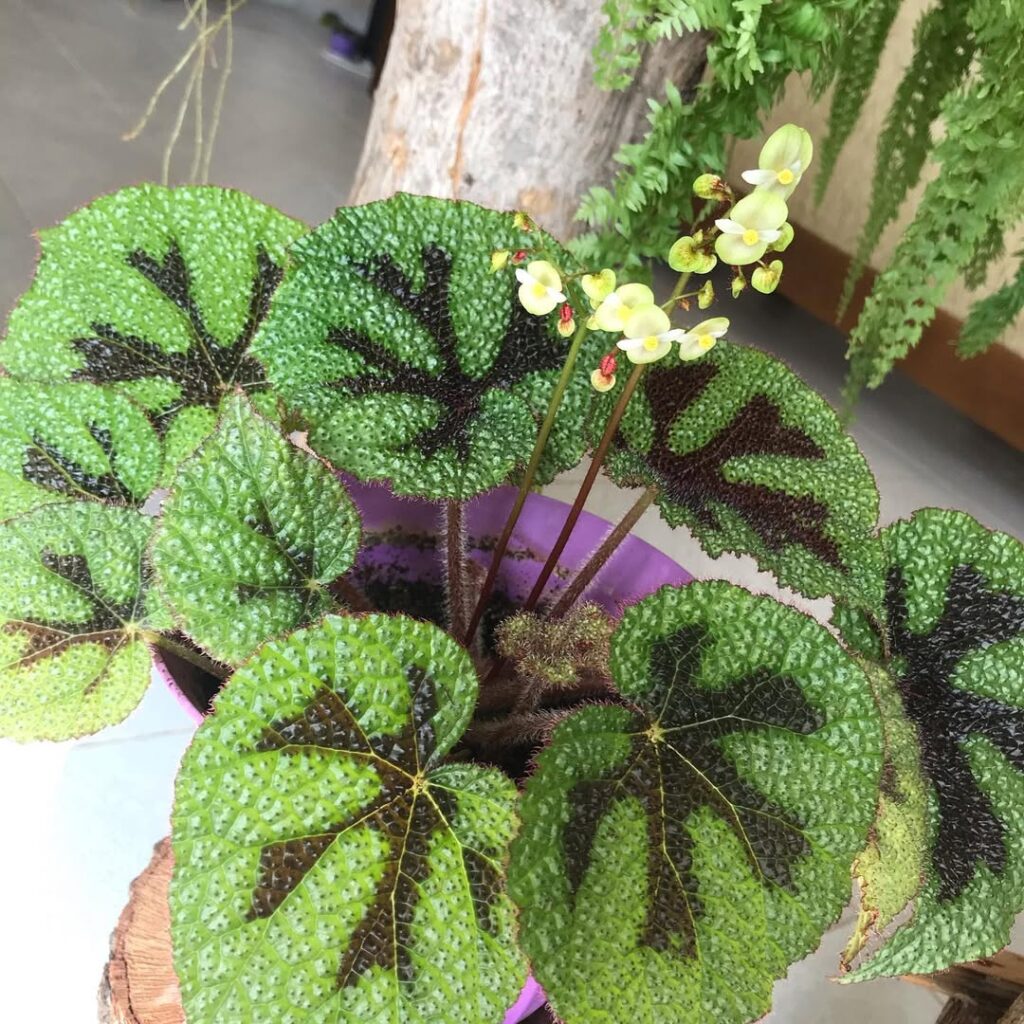
Iron Cross Begonia, also known as Begonia masoniana, is famous for its striking foliage with a dark cross-shaped pattern at the center of its textured green leaves. This rhizomatous perennial thrives in warm, humid environments, making it a great indoor plant. It produces small pink-flushed white flowers, but its bold leaves remain its main attraction.
14. Begonia U093
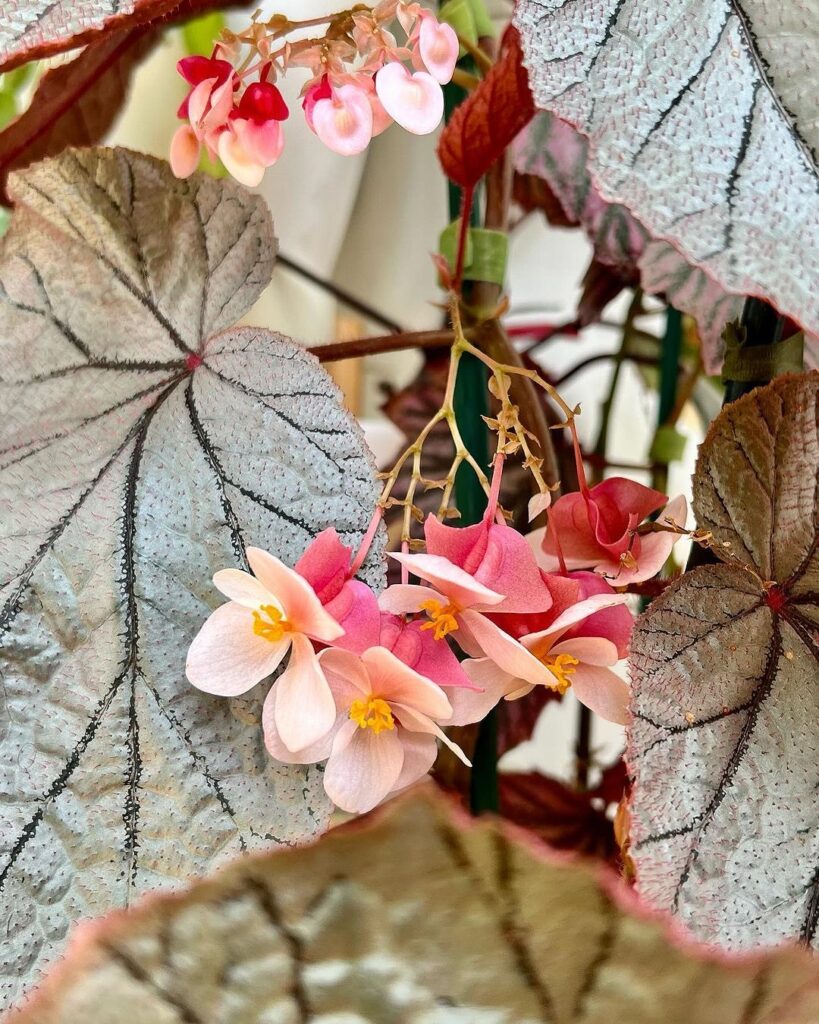
Begonia U093 has striking metallic leaves and tiny red hairs. Its silvery-gray foliage has a reddish tint along the edges, making it visually unique. The plant produces small, delicate flowers in pink and white, with yellow centers arranged in a cascading manner.
15. Begonia Pink Minx
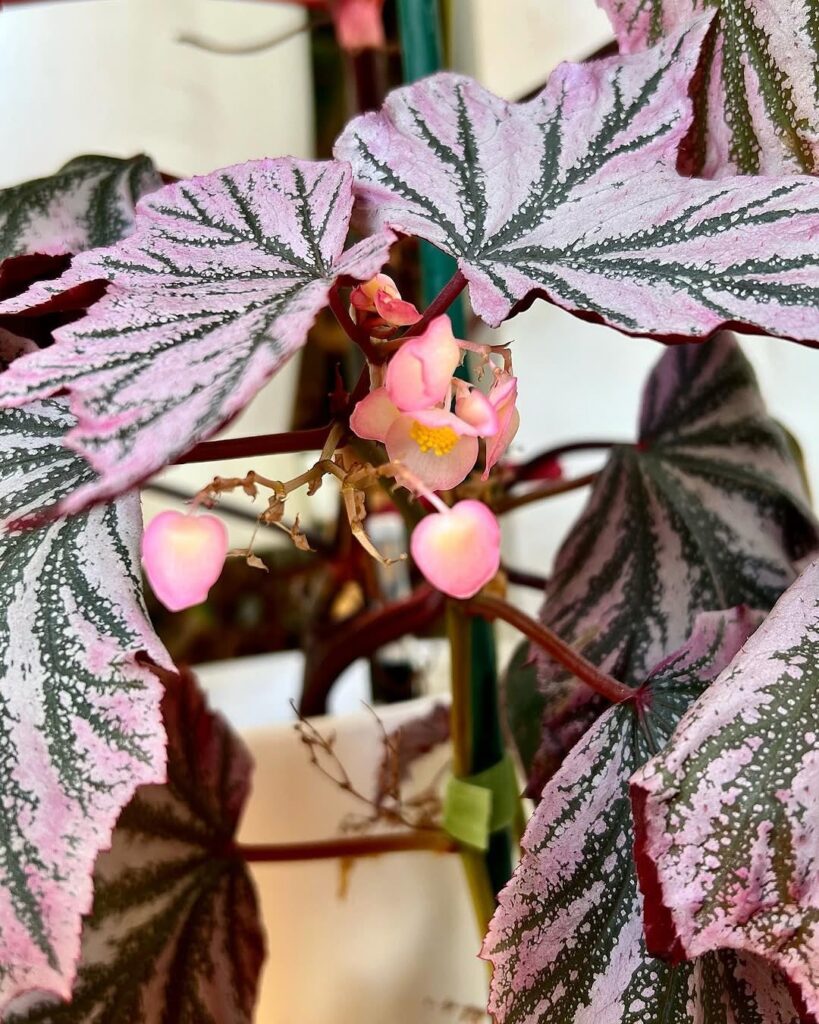
Begonia Pink Minx is a fibrous hybrid with deeply cut leaves dusted in a patchwork of pink. Its upright growth and dense foliage make its free-flowering blooms even more alluring.
